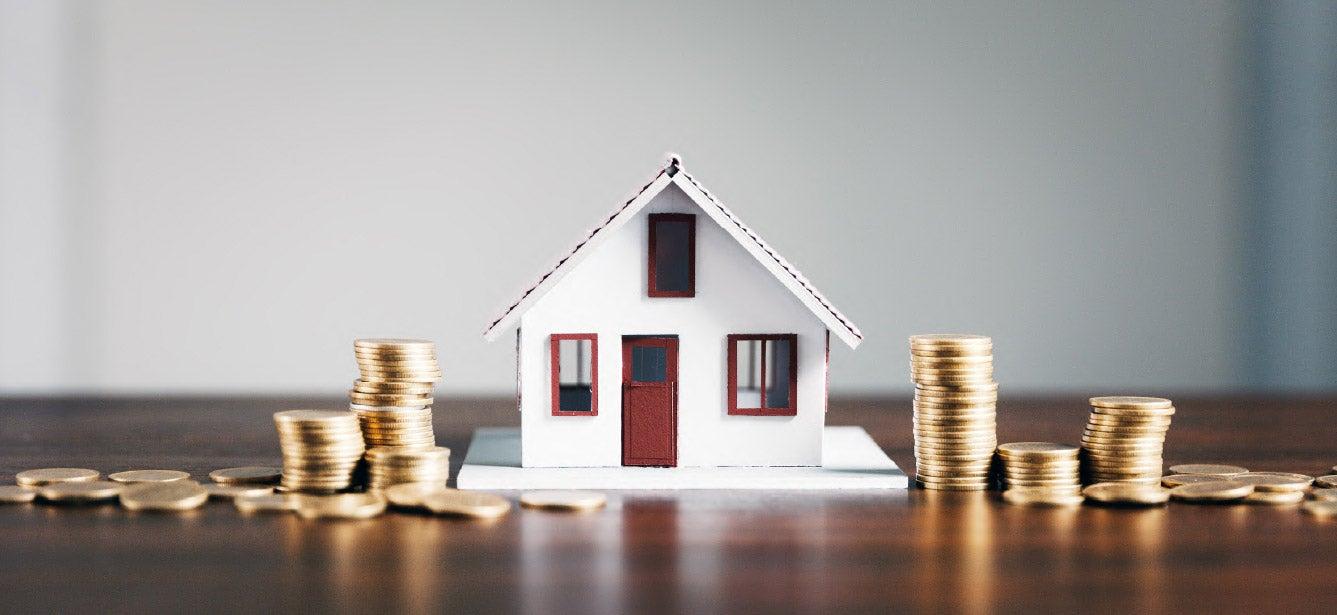What Is a Home Equity Line of Credit (HELOC)? A Guide for Older Adults
7 min read

Housing, health care, groceries, and other day-to-day expenses continue to strain many household budgets across the U.S. This iXs especially true for older adults trying to get by on just Social Security and retirement savings.
If you need additional income to help cover gaps in your budget, fund major expenses, and age in place—and you’re a homeowner—one option to consider is a home equity line of credit. Also called a HELOC, a home equity line of credit is a financial tool that allows you to tap into the equity you’ve built up in your home over the years.
“Older adults often find themselves in a position where they have significant equity in their home,” explains Jessica Johnston, NCOA's Senior Director for the Center for Economic Well-Being.
A HELOC is a key to unlocking this financial value while remaining in the home. When used wisely, it can provide greater financial security and flexibility during retirement,” Johnston said.
In this guide, we'll cover how a home equity line of credit works, what you can do with it, and what you should consider before getting one.
What is home equity?
Home equity refers to the value you build in your home over the course of owning it. Equity is built by making mortgage payments and through natural increases in market value. Home equity is calculated by subtracting the amount you still owe to the mortgage lender from your home’s appraised value. Essentially, it’s the portion of your home that you own outright.
How does a home equity line of credit work?
A home equity line of credit is a flexible type of loan that uses your home as collateral. If you’re approved, the lender gives you a revolving line of credit based on the amount of equity you have. You don't have to use all the money at once; you take out only what you need, when you need it, up to the limit. (Note: A HELOC is not the same as a home equity loan, where you borrow a specific amount of money all at once and receive one lump sum.)
A HELOC is made up of two main phases:
- Draw period: During this time, you can withdraw money as often as you'd like, and you aren't required to make payments toward the principal. Usually, you’re responsible for interest-only payments on any money you've withdrawn. The draw period differs by lender, but typically lasts five to 10 years. This is a big benefit of a HELOC, since it provides more flexibility in the way you use your loan. It also gives you plenty of time to plan ahead for how you’ll pay off the principal balance.
- Repayment period: When the draw period is over, your HELOC shifts to the repayment phase where you pay off the outstanding balance on your loan. You will not be able to withdraw any more funds at this time. During this phase, you'll make monthly payments that include both principal and interest (much like a regular loan). The repayment period usually lasts from 10 to 20 years depending on the lender.
One hallmark of HELOCs is that they often have much lower interest rates than other types of loans or credit. And, since you pay interest only on the amount you’ve withdrawn from your line of credit (not the entire spending limit), you can save a good sum of money on overall borrowing costs.
What is the purpose of a home equity line of credit?
Another key advantage of a HELOC is its flexibility. There are a number of ways you can use this tool to support your financial well-being in retirement:
- Supplemental income: The funds from a HELOC can be used to pad your retirement income, allowing you to better manage everyday expenses and enjoy a more comfortable lifestyle.
- Home improvements and/or modifications: You can use a HELOC to make renovations or repairs to your home, which can increase the property's value. These funds can also be used for modifications that make your home safer and more accessible—so you can live there for as long as possible (e.g., handrails or a walk-in bathtub).
- Debt consolidation: Many people take out a HELOC to pay off high-interest debts, such as credit card balances. This can simplify your monthly payments and save you money on interest.
- Emergency expenses: A home equity line of credit can help you cover unexpected high medical bills, home repairs, or other sudden costs.
- Investment opportunities: Some seniors use HELOC funds for investment purposes like purchasing additional real estate, investing in stocks and other assets, or even starting a business.
- Travel and leisure: HELOCs are often used (responsibly) for travel and other fun activities you’d like to pursue during retirement.
- Long-term care: Should you ever decide to or need to transition to assisted living or nursing home care, a home equity line of credit can help cover these expenses.
What are the disadvantages of a home equity line of credit?
Like with any type of loan, there are potential drawbacks and risks to consider when taking out a home equity line of credit:
- Risk of losing your home: Perhaps the biggest disadvantage is that a HELOC is secured by your home. If you cannot repay the borrowed amount on time, you risk losing your home through foreclosure.
- Variable interest rates: Many HELOCs have variable interest rates that can change over time, making it hard to predict future payments. Rising interest rates can translate into higher monthly payments.
- Higher payments during repayment period: HELOC payments are generally low during the draw period. When the repayment period begins, the sudden increased payment could pose a financial strain.
- Fees and closing costs: Like any loan, HELOCs may come with fees and closing costs, which can add to the total cost of the loan.
- Minimum withdrawals: While lender terms vary, some banks require you to make minimum withdrawals from your HELOC. That means you must pay interest on that money, even if you don’t end up using it.
- Reduced home equity: When you take out a HELOC, you’re borrowing against the home equity you’ve been building for years. If the housing market sours, your outstanding balance could end up being more than your home is worth.
- Risk of overspending: Since a home equity line of credit essentially provide easy access to cash, it can be tempting for some borrowers to use the money impulsively for non-essential expenses.
What are the home equity line of credit requirements?
The requirements for getting a home equity line of credit can differ depending on the lender and your personal financial situation. However, in general, most lenders consider the following factors:
- Sufficient home equity: To qualify for a HELOC, you typically need to have a large amount of equity in your home (at least 15-20%). This is usually determined through a new appraisal of your property.
- Credit score: To ensure you're a good risk, most lenders will want you to have a credit score that's at least in the mid-to-high 600s. Lenders tend to look for a history of on-time payments on your existing debts, including your mortgage and credit cards.
- Debt-to-income ratio: This refers to the percentage of your monthly income that’s applied toward debt payments. A lower ratio is generally preferred.
- Financial stability: Banks want to know you can repay your loan. You may be asked to provide documentation of wages, Social Security payments, bank accounts, tax returns, and other financial information.
- Occupancy: HELOCs are typically available for primary residences. There may be restrictions on second homes or investment properties.
Explore your HELOC options thoroughly and be sure to use this credit option responsibly
A home equity line of credit is a versatile financial tool that can help you improve your quality of life in retirement and address different financial challenges as you age. But, NCOA's Johnston warns, it must be used responsibly.
“Think carefully about how you’ll use that money,” Johnston said. “Go over your finances with a fine-tooth comb and take a realistic look at your ability to repay the loan. A licensed financial advisor can help you understand the terms of any HELOC product you’re considering, weigh the pros and cons, and decide if it's the right option for your needs.”
Want more tips on building financial security as you age? Explore NCOA’s Money for Older Adults resource library.




